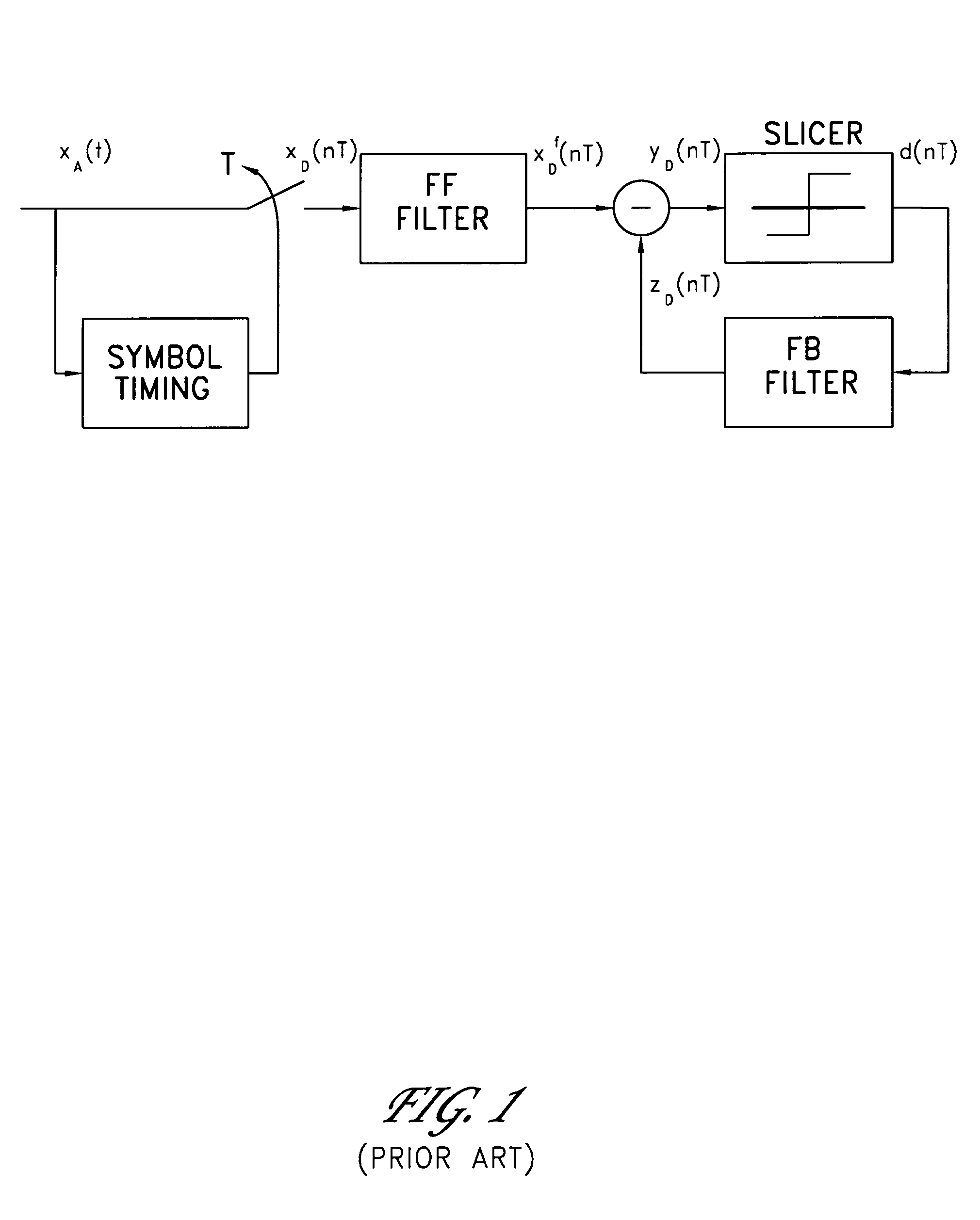Decision feedback equalizer (DFE) for jitter reduction
a feedback equalizer and decision-based technology, applied in the field of digital communication, can solve the problems of limiting the effective transmission of data signals over communications channels, high error rates, time smearing and interference between successive transmitted input symbols, etc., and achieves the effect of reducing error performance in the associated receiver, stabilizing the phase of an equalized signal, and reducing jitter
- Summary
- Abstract
- Description
- Claims
- Application Information
AI Technical Summary
Benefits of technology
Problems solved by technology
Method used
Image
Examples
Embodiment Construction
[0067]Although particular embodiments are described herein, other embodiments, including embodiments that do not provide all of the benefits and features set forth herein, will be apparent to those of ordinary skill in the art.
[0068]In both model 1 and model 2 of the conventional decision feedback equalizers (DFE) described earlier, inter-symbol interference is desirably reduced at the sampling instants. However, at other times of a symbol period, each of model 1 and model 2 inadequately equalize the received signal xA(t) to the equalized signal yA(t). Equalization of relatively larger portions of the symbol period desirably can reduce jitter, which can advantageously improve the bit error rate (BER) of an associated receiver.
Operation of Jitter Reducing Decision Feedback Equalizer (DFE) According to Improved Model 1 (FIG. 10)
[0069]The conventional decision feedback equalizer (DFE) according to model 1, as illustrated in FIGS. 3, 6, and 7, fails to correct for inter-symbol interfere...
PUM
 Login to View More
Login to View More Abstract
Description
Claims
Application Information
 Login to View More
Login to View More - R&D
- Intellectual Property
- Life Sciences
- Materials
- Tech Scout
- Unparalleled Data Quality
- Higher Quality Content
- 60% Fewer Hallucinations
Browse by: Latest US Patents, China's latest patents, Technical Efficacy Thesaurus, Application Domain, Technology Topic, Popular Technical Reports.
© 2025 PatSnap. All rights reserved.Legal|Privacy policy|Modern Slavery Act Transparency Statement|Sitemap|About US| Contact US: help@patsnap.com



